How to Pack Fragile Items for Storage — The Smart Way to Pack Your Valuables
If you’re packing fragile items for storage, the difference between “intact” and “uh-oh” is all in your prep. Dish sets, picture frames, heirloom ceramics, guitar amps, mirrors, and knick knacks all behave differently under road vibration and warehouse stacking. Below is your complete, step-by-step playbook—grounded in Box-n-Go’s portable model—so you can pack fragile items once, load at ground level, and keep your valuables safe from pickup to redelivery.
- Save 50% on move-in
- No truck rental
- Ground level

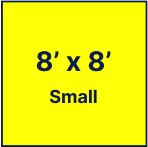
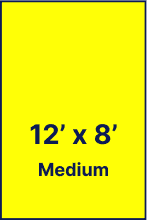

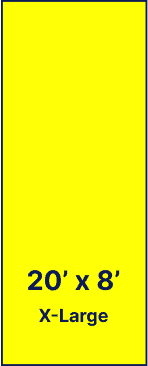





- Save 50% on move-in
- No truck rental
- Ground level
Box-n-Go Portable Storage Unit Sizes

Primary goal: give you a repeatable method (materials → prep → wrap → box → load) that reduces shock, limits pressure points, fills empty space, and keeps your most valuable pieces snugly protected.
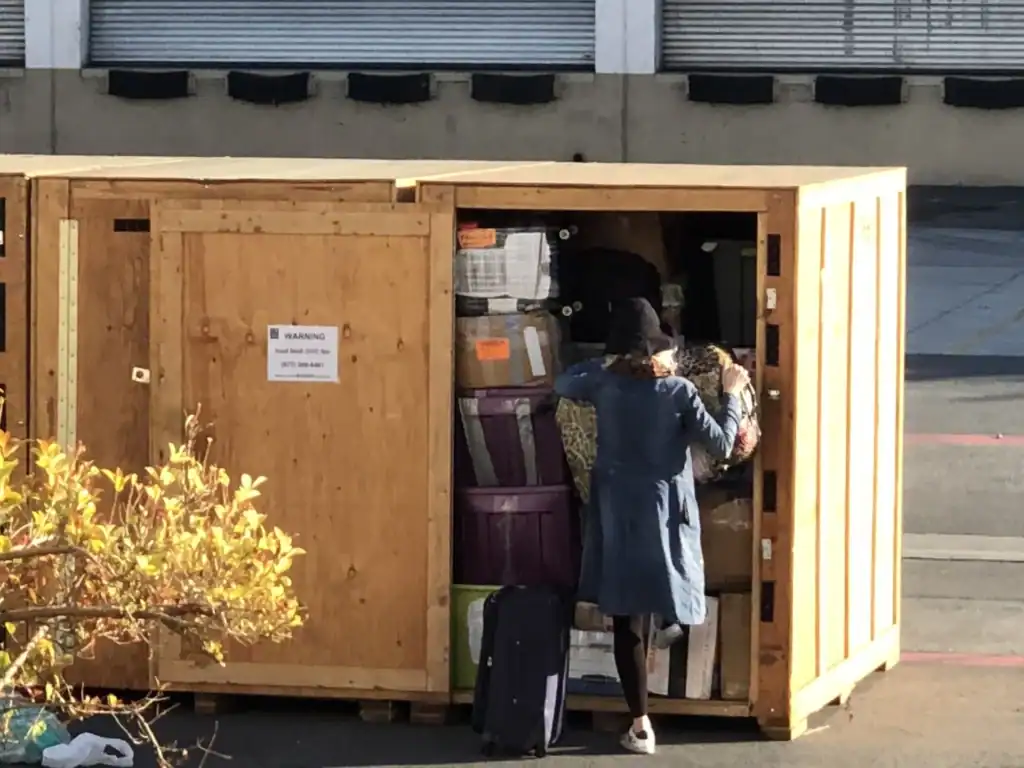

Key takeaways
- Use packing paper and bubble wrap together: paper shapes tight to surfaces; bubble wrap adds shock absorption.
- Pack each fragile item individually; never let items together clink or share hard contact.
- Choose small boxes or smaller boxes for weight control; place the heaviest pieces low and centered.
- Create a cushion top/bottom layer (paper, foam, or packing peanuts) and remove all empty space with packing peanuts or crumpled paper.
- For moving and storage in portable units, anchor stacks, distribute weight, and strap tall items.
- Box-n-Go’s curbside delivery → ground-level loading → indoor storage → drive-up appointments → redelivery keeps handling to a minimum.
The core challenge: each fragile item fails differently
A fragile object breaks because of shock (sudden drop), pressure (stacking), vibration (transport), or environment (moisture & temperature swings). Your packing plan should counter all four:
- Shock/vibration: wrap pieces individually wrapped and block movement inside boxes.
- Pressure/stacking: use sturdy boxes with reinforced seams; avoid overpack; keep heavy to the bottom of the box.
- Environment: avoid trapping moisture; don’t pack a damp item; use paper, pads, and breathable layers (newsprint can transfer ink—use it as filler, not against finishes).
- Handling: smaller, well-labeled moving boxes are safer to lift and stack in a moving truck or container.
The supply list that saves the day (packing paper · bubble wrap · packing material · packing tape · pad)
Must-haves
- Packing paper (ink-free), bubble wrap (small bubbles for glassware, larger for frames), and foam packing sheets.
- Heavy-duty shipping cartons (200# test or higher), dish-pack boxes, frame/mirror boxes.
- Cardboard dividers for glassware, bottles, and tall vases.
- Packing tape (quality acrylic tape), painter’s tape for temporary holds.
- Labels/markers + “FRAGILE/THIS SIDE UP” stickers.
Store on your driveway or inside our secure facility. Load/unload only once. Ground level access.
Nice-to-haves
- Corner protectors for frames and mirrors.
- Stretch film (keep off wood finishes; use pads first).
- Reusable quilted pads to protect fragile items and furniture faces.
- Zip bags for screws/feet when you disassemble bases or stands.
Box-n-Go can provide packing supplies with your container delivery—ask for kits when you schedule.

Prep before you wrap: the 10-minute routine that prevents 90% of problems
- Clean & dry each piece (dust scratches glass; moisture breeds mildew).
- Disassemble where possible (lamp shades, table leaves, removable shelves). Bag hardware, label, and tape to the parent item.
- Photograph high-value or complex setups (helps reassembly, supports insurance).
- Sort by type & weight (heavy ceramics & books low; lighter items up top).
- Stage small “kits” per box (like dishes, bowls, or a specific glass set).
- Pre-cut paper sheets and bubble lengths to size; it speeds the packing process.
The wrap: paper tight, bubbles outside (items with packing paper → wrapped in bubble wrap → seams secured with tape)
- For fragile items like plates, mugs, and figurines, first apply packing paper or bubble wrap directly on the surface (paper hugs contours and prevents scuffing); then add bubble wrap for shock.
- Roll roll packing style for bottles and vase shapes: fill the cavity with paper, then wrap neck to base, secure with tape.
- Use bubble wrap bubbles facing inward for smooth contact; tape overlaps, not the object.
- Irregular-shaped pieces (sculptures, lamps): “bridge” protrusions with foam, then a bubble “cap,” then full wrap.
Box it right: build a shock-absorbing sandwich (packing boxes · small boxes · bottom of the box · pad)
- Reinforce seams (H-tape the bottom).
- Pad the bottom of the box with 2–3″ of crumpled newsprint (ink-free) or foam.
- Place the heaviest wrapped items upright and centered; fill sides with paper “pillows.”
- Add a mid-layer pad, then lighter layers. Snugly fill extra space so nothing shifts.
- Double box valuables (e.g., crystal, heirloom ceramics): inner box fully padded, then suspended inside a larger box with 2–3″ buffer on all sides.
- Tape the box closed with at least two tape paths; label room, contents, and handling arrows.
- Call or order online in minutes
- We deliver storage to you
- Pack at home, at your convinience
- Store on your property or at indoor facility
- Move locally or nationwide
- Call or order online in minutes
- We deliver 16′ and 20′ storage to you
- Pack at home, loading labor available
- Store on your property
- Secured Extra Space
How to pack fragile items for moving: the category playbook
1) Glassware & stemware (packing paper and bubble wrap · cardboard dividers · small boxes · how to pack glassware)
- How to pack glassware fast: stuff each glass with paper, then wrap stem → bowl → base; add a second layer of bubbles.
- Use cardboard dividers inside small boxes (keeps collisions down).
- Stemware: treat each piece as a tiny sculpture—paper first, then bubble; stand vertically.
- Dinner plates: pack on edge (like records) with paper pads between each; never flat stacks without separation.
2) Ceramics & breakables (ceramics · fragile things · piece in bubble wrap)
- Fill cavities with paper (mugs, pitchers), then wrap base to handle; a piece in bubble wrap per layer.
- For fragile items for moving like porcelain figurines, “cap” protrusions with foam first.

3) Artwork & mirrors (use cardboard · pad · foam packing)
- Corner guards + full paper wrap + bubble wrap; use cardboard sheets (or a frame box) as armor.
- Make a painter’s-tape “X” on glass to reduce broken glass spreading if it cracks.
- Pack upright; don’t stack.
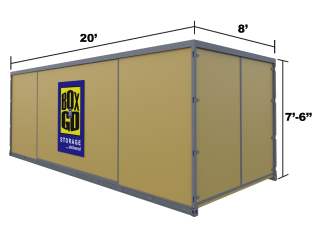
20’ Container – all weather.
Perfect for 3-bedroom residence.
5-7 rooms, furniture, appliances, etc.
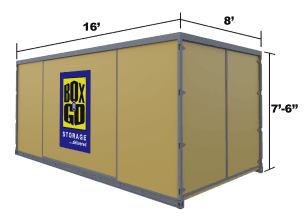
16’ Container – all weather.
Perfect for 2-bedroom residence.
3-5 rooms, furniture, appliances, etc.
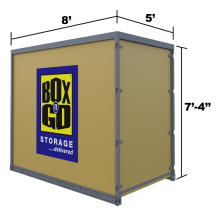
8’ Container – all weather.
Modular – works for any need.
Each fits 1-1.5 rooms.
4) Electronics (packing boxes · heavy duty shipping)
- Original boxes are best. If not, double-box with dense foam corners. Remove batteries, coil and bag cords, add desiccant if humid.
- Mark screens “do not stack.”
5) Kitchen “like dishes” kits (items like · packing paper · bottom of the box · packing peanuts)
- Paper-wrap each bowl/plate; pack on edge; build two rows with a padded channel; fill all voids; top with a firm pad.
- Use packing peanuts lightly; paper does the shaping, peanuts lock the last gaps.
Loading a portable container: stability beats speed
Goal: keep things from moving while keeping boxes easy to retrieve.
- Build a stable base with heavy furniture and book boxes; strap to wall rings if available.
- Stack dish packs on their edge (plates vertical) and furniture pads between stacks.
- Keep heavier items low, lighter items high; never top-load dense bins on glass or frames.
- Strap tall items and wedge with cushion blocks so nothing walks during transit.
- Leave a small access aisle near the door for quick grabs.
Box-n-Go’s ground-level loading removes ramp drama; fewer lift risks = fewer breakages.
Portable storage packing checklist (print-and-go)
Pre-packing
- Gather packing supplies (paper, bubbles, tape, dividers, labels).
- Clean/dry items; disassemble where needed; bag hardware.
- Stage small boxes for glassware; pre-cut wrap lengths.
- Photograph high-value pieces.

During packing
- Paper first, bubbles second, tape seams—not surfaces.
- Use cardboard dividers for bottles/stemware.
- Fill empty space; shake-test each box; add filler until silent.
- Mark “FRAGILE/UP” + room + brief contents.
Loading day
- Place the heaviest boxes at floor level; distribute weight left→right.
- Strap tall stacks; wedge gaps with pads.
- Keep an inventory on your phone and inside the container door.
- Confirm pickup window and access instructions.
Common mistakes (and quick fixes)
- Underpacking (too much void space) → add paper “pillows” until nothing shifts.
- Overpack (box too heavy) → use smaller boxes and split sets.
- Using inky newsprint against surfaces → use ink-free paper on the object; newsprint only as filler.
- Wrapping items together → always isolate with paper & bubble.
- Skipping corners on frames → add protectors; it’s the first place pressure shows.
- Ignoring labels → future-you wants “Fragile—Kitchen—Stemware, Row 2.”
We deliver the best storage solutions. No gimmicks:
- No truck to rent. We deliver storage to you!
- Load/Unload only once.
- Pay only for space you use.
- Secure, climate-friendly facility.
- Drive-up access
No Truck to rent…EVER!
- Save money and time.
- Reduce the risk of accidents and injuries.
- No need to pay for gas, insurance & mileage!
Load ONCE Storage Solution!
- You only need to load your belongings once!
- No need to load and unload it all again into a storage unit.
- All containers come with easy ground level access!
Pay Only for the Space You Use!
(if storing at our facility)
- No not need to guess on how much space you actually need.
- Order an extra 8’ x 5’ unit. Do not use it – do not pay for it.
Secure, Climate-Friendly Facility!
- Highest degree of security and protection.
- Our 8’ x 5’ units are breatheable – no mold or mildew.
- No funky smell when your belongings return.
EASY Drive-Up Access!
(if storing at our facility)
- Access your units at ground level.
- No elevators, ramps, stairs to climb.
- Schedule access appointment & drive straight to your units.
When to call a mover or a moving company (and how to work with them)
- If you’re short on time or have museum-grade pieces, hire a full-service moving crew for specialty packing.
- Ask for heavy duty shipping cartons and a dish-pack approach; request double box on crystal and art.
- Have the team follow your system (paper-then-bubble, upright plates, straps and wedges in the container).
- Box-n-Go can coordinate moving and storage timing: deliver container → your crew packs → pickup for indoor storage → unpack at redelivery.

Why Box-n-Go’s model helps protect fragile items
- Curbside container: no truck rental, no docks, fewer hand-offs.
- Ground-level load: safer lift angles for irregular-shaped items.
- Minimal-movement handling: fewer transfers than a DIY truck + facility loop.
- Indoor storage with tracked units and scheduled drive-up access reduces rush and re-handling.
- Packing kits available on request; ask when you book your container at 877-269-6461.
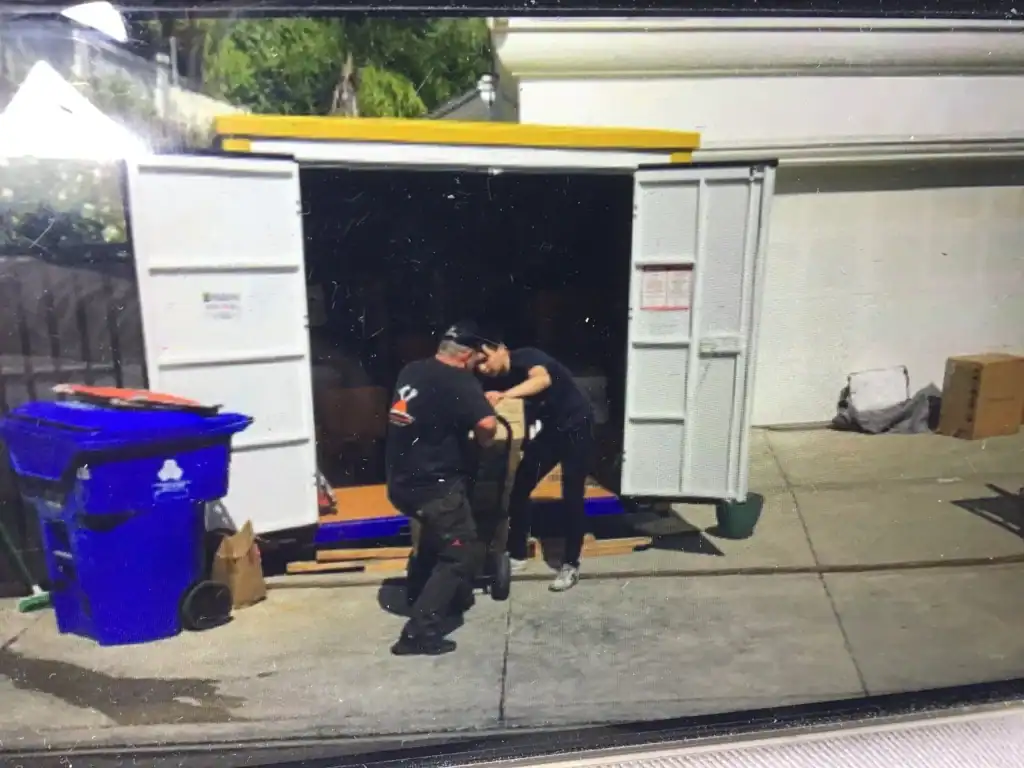
Conclusion: the safest pack is a system you can repeat
The “best packing” system is simple: packing paper touches the surface, bubble wrap handles the shock, use cardboard dividers to create lanes, pad the bottom of the box, and remove all empty space. Pack sets in small boxes, place the heaviest low, and strap stacks inside your portable container so nothing shifts. Follow that sequence and you’ll reduce the risk for virtually every fragile item—from glassware and ceramics to frames, lamps, and electronics.
With Box-n-Go, you pack fragile items for moving once at ground level, we pick up, store securely, and redeliver when you need them—fewer hands, fewer miles, far less anxiety. If you want tailored storage packing tips for your list of items to move, or a ready-to-use portable storage packing checklist, call 877-269-6461. We’ll help you pick the right materials, right box sizes, and a pickup schedule that keeps your timeline—and your delicate belongings—under control.

FAQ: Packing Fragile Items for Storage
What’s the best way to pack glassware and stemware?
Line each glass with packing paper, then wrap stem→bowl→base with paper; add bubble wrap outside and secure with tape. Use cardboard dividers in small boxes. Pack vertically and fill voids so nothing rattles. That’s the proven “how to pack glassware” method.
Should I use packing peanuts or paper?
Use paper to shape around the item; use peanut/peanuts to lock the final gaps. Paper prevents clinking; peanuts stop shifting. Avoid peanuts as the only cushion for heavy objects.
How do I pack irregular-shaped lamps and sculptures?
Disassemble shades/finials, pad protrusions with foam, then wrap the entire fragile item in paper → bubble wrap. Fill hollows (like a vase) with paper first. Double-box true collector’s pieces.
Is newsprint okay?
As packing material, yes—but not directly on finishes. Ink-free packing paper should touch the object; use newsprint only as bulk filler or “paper in the box.”
What goes on the bottom of the box?
A dense pad: 2–3″ of crumpled paper or foam. Then your heaviest wrapped pieces, upright and centered. Fill edges, add a mid-pad, and build lighter layers above.
How heavy should a box be?
A comfortable single-person lift is ideal—generally under 40 lb for packing boxes with breakables. Use smaller boxes for dense items so you don’t overpack.
What about “original boxes”?
They’re excellent when complete with factory foam. If not available, mimic them: corner foam, paper to shape, and double box with 2–3″ buffer all around.

How do I load a portable container so things don’t migrate?
Build a heavy base, place the heaviest low and centered, strap tall stacks, wedge with pads, and keep a narrow aisle. That’s the portable-unit version of shipping fragile safely.
Can Box-n-Go supply packing supplies and pick up after I’m done?
Yes—ask for dish-packs, frame boxes, bubbles, paper, and labels when you book. We’ll deliver the container, you load, and we’ll pick it up for indoor storage or redelivery on your schedule.
Any last-minute moving tips to prevent broken glass?
Label all sides, keep plates on edge, don’t stack heavy over frames, and do a shake-test before sealing. If you hear movement, add more filler. Finally, tape boxes in an H-pattern so seams can’t burst.

